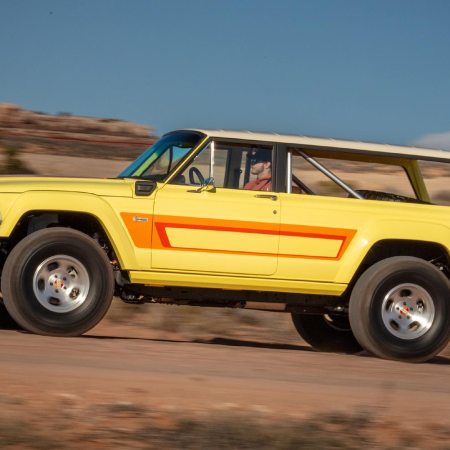When Joseph Bramah patented the hydraulic press in 1795, it’s doubtful he foresaw the invention’s glittering debut in a Rolls Royce Phantom for Snoop Dogg and Pharrell’s “Drop it Like it’s Hot” some 309 years later.
But these things are hard to predict.
Hydraulics began as a modest, utilitarian piece of engineering, the same tech still used today by planes, cranes, bulldozers and other varieties of get-er-done heavy machinery.
Things got a little more interesting in the late ‘50s early ‘60s, when the post-WWII economics fomented the rise of lowrider culture. These makes were abundant, accessible and easy to swoop up, spawning a “low and slow” cult following that was especially popular in Southern California.
The first fella to raise ‘er up was Ron Aguirre, with his 1955 Corvette XSonic. A sight to see, and also one of the first American bubble cars in existence. All electric and controlled by a remote, Aguirre installed a premier auto hydraulics system to avoid scraps and speed bumps.
In the process of raising and lowering the vehicle for being-a-good-boy purposes, though, lowrider enthusiasts started to notice that the car could bounce, lift and shift from side to side. They further noticed that doing this was rather enjoyable, for driver and onlookers alike.
(The cops, however: not so keen on the trend. Vehicle Code 24008 was shortly rectified, stating it thereby illegal to operate any car modified so that any part was lower than the bottoms of its wheel rims. But you know what they say about rules and breaking them.)
Lowrider culture soon spiraled into an international hobby, although it remains most prevalent in SoCal to this day.
The logistics of installation are pretty simple, albeit very pricy. It’s two cylinders or more connected to a pipe filled with oil supplied by a pump. The cylinders compress pressure onto the oil and lift the car up. The placement and quantity of the pumps determines the amount of air the ride is going to catch. And these days, that translates to some serious amplitude.
At “jumping contests,” you can see souped-up steeds hop six or more feet in the air and sometimes, for better or worse, flip completely over. There’s even a truck-bed category that involves circus-esque hydraulic tricks (the trending of which has paved the way for a new round of legal repercussions that vary from state to state).
Today, hydraulics enjoy as much attention in pop culture as they do on the street, making appearances in everything from Cheech & Chong’s Up in Smoke to Wrongfully Accused to the Fast & Furious suite. Are they necessary? No. Have they ever been? No. But beyond food, shelter, water and air — what really is?
They’re novel, they’re fun to look at and, as far as vices go, fairly harmless. That seems like enough merit to justify their existence to us.
This article was featured in the InsideHook newsletter. Sign up now.





















